Can Color Blindness Be Cured?
Quick answer: There’s no definitive medical cure for color blindness, but most of the limitations of color blindness can definitely be overcome with the proper tools and training.
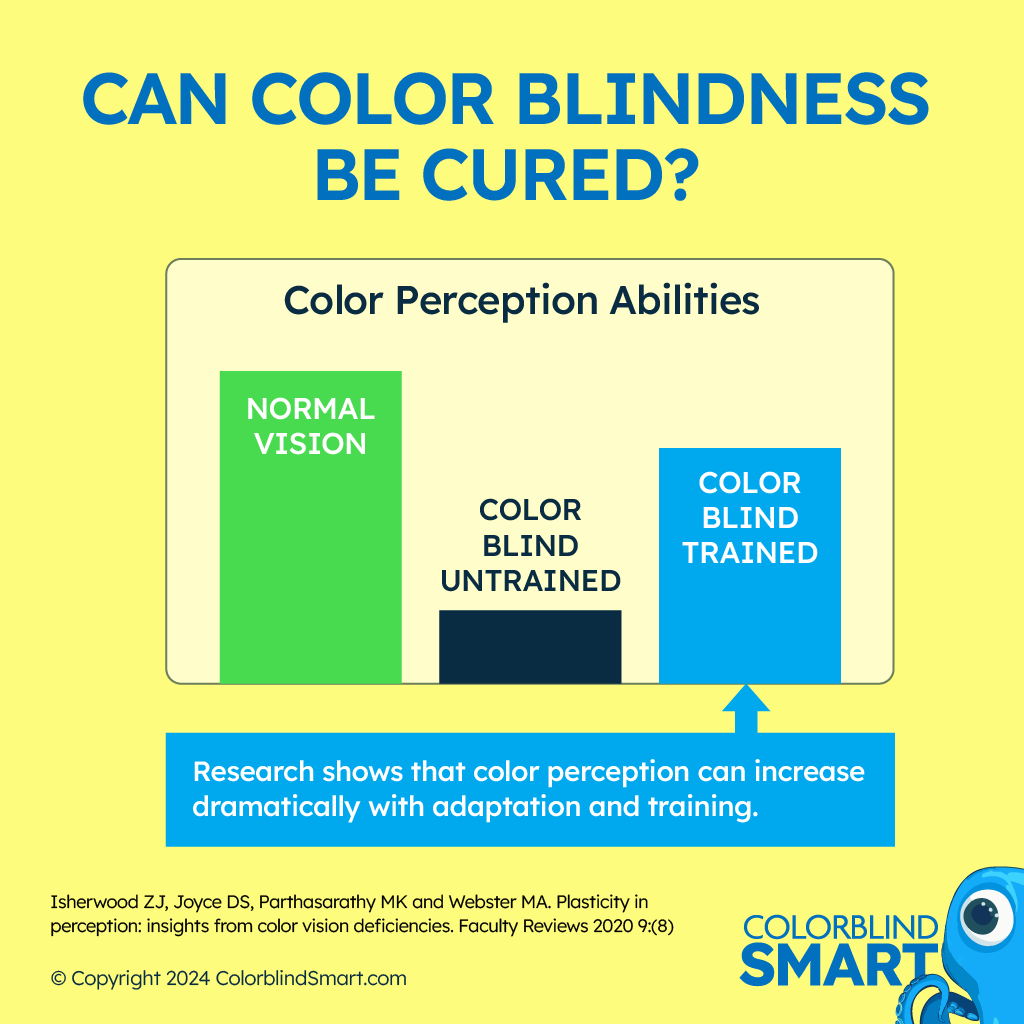
In my experience, most obstacles can be overcome through the right combination of tools, mental training, and a willingness to learn new ways of seeing. Although “cure” is a strong word, I believe there are promising developments that can bring life-changing improvements for many people.
Living with Color Blindness
I’ve been color blind—having color deficient vision—my entire life. Technically, my green cones don’t fire at the correct wavelength. As a kid, I was embarrassed by this anomaly. I’d hesitate to mention my color blindness because of the reactions I’d get. If you’ve experienced anything similar, you know exactly how isolating it can feel. Over the years, I’ve researched gene therapy, special lenses, and different training techniques. Despite everything, the cones in my retina remain the same. There is no magic pill that suddenly corrects the malfunction in my retina.
Yet I’ve reached a point where I almost never misidentify color. It takes conscious effort, practice, and a deeper understanding of how my eyes and brain process color. I earned a degree in graphic design and I’m now an art director for a large non-profit business. Nobody knows I’m color blind unless I decide to share it. This improvement had little to do with external “fixes” and a lot to do with re-training my color perception.
The Roots of Color Blindness
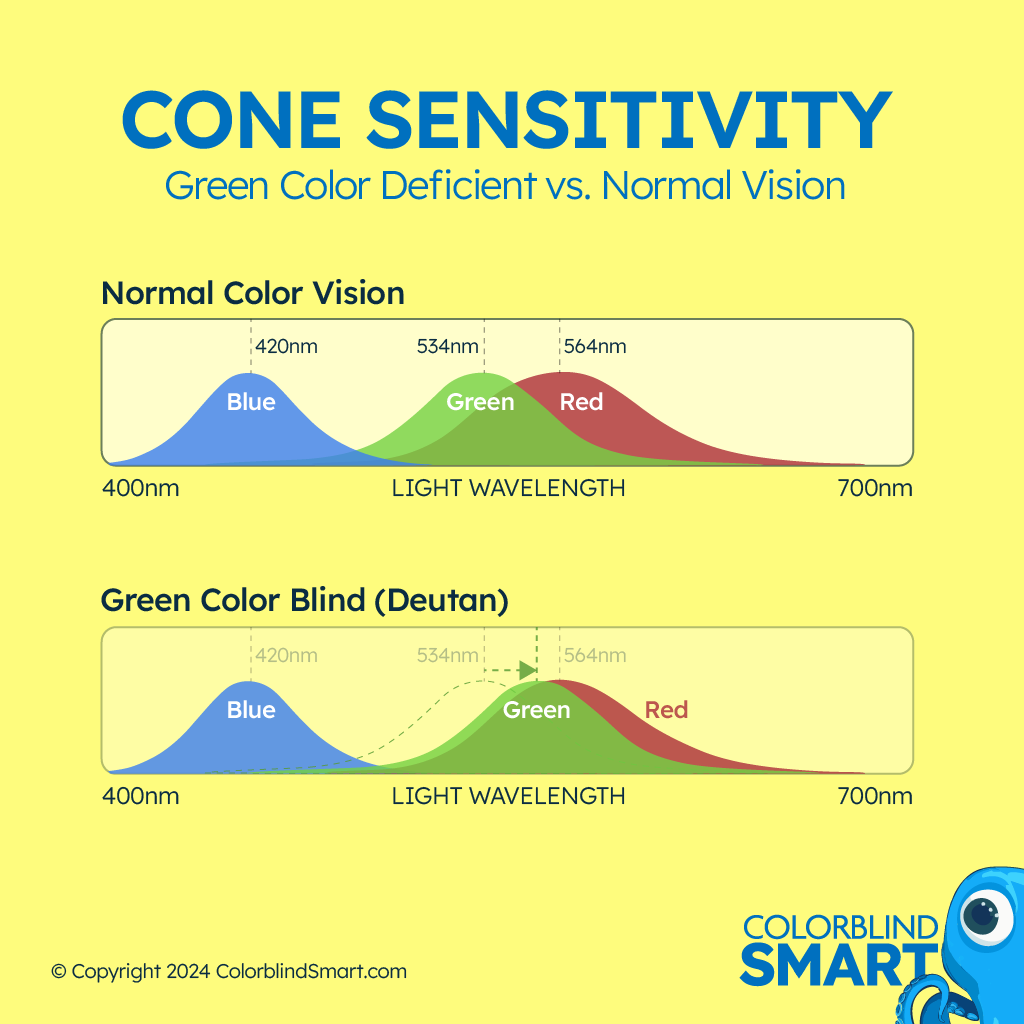
Color blindness (often referred to as color vision deficiency) is typically caused by a genetic mutation carried on the X chromosome. This genetic hiccup means one or more cone cells malfunction. For instance, in my case—deuteranomaly—the “green” cones respond to wavelengths closer to red. Instead of clearly separating red and green signals, my brain receives signals for both.
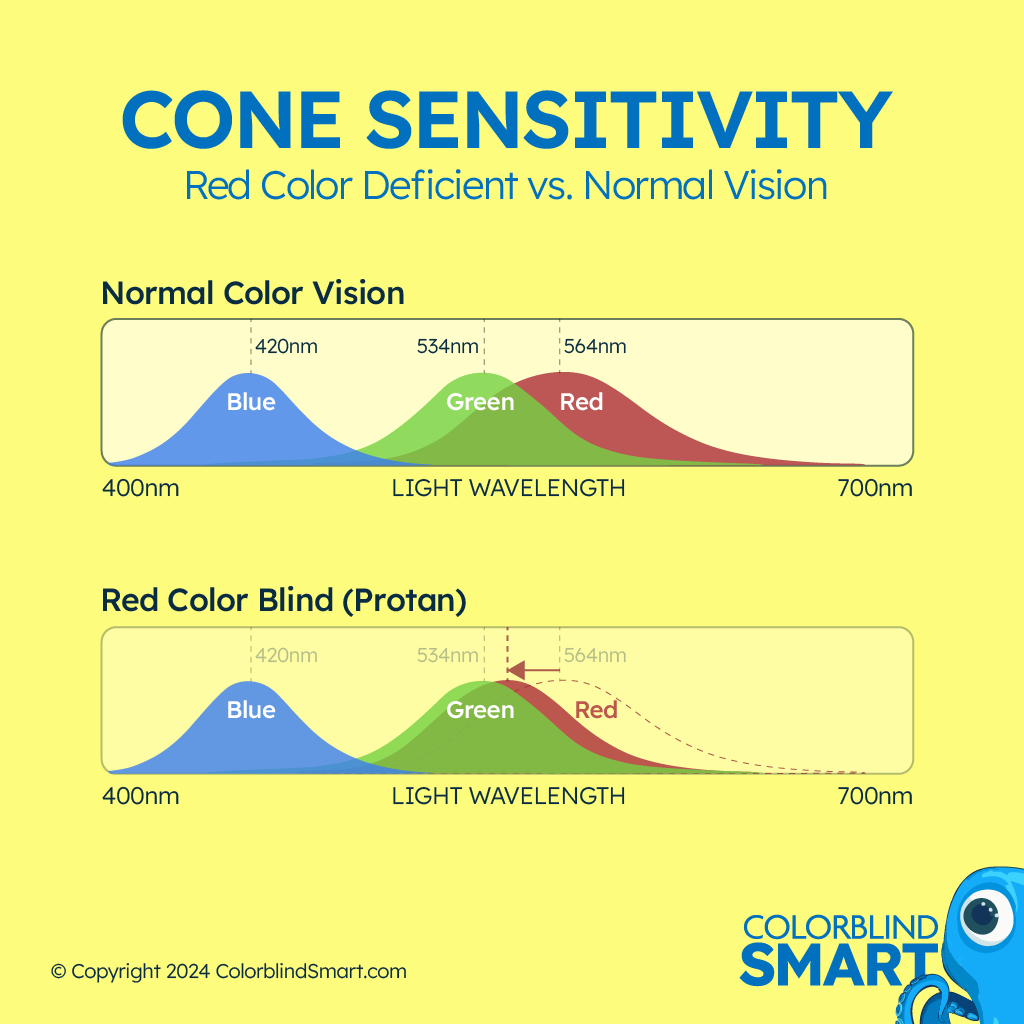
There are other types of color blindness too. Protanomaly or protanopia affect red cones, while tritanopia affects blue cones (very rare). But all three types share the same core problem: cone cells are either absent or fail to process light the way they’re supposed to. When the hardware is off at a genetic level, it’s not something a quick surgery or pill can fix—at least not yet.
Common Approaches That Don’t “Cure” Color Blindness
Because color blindness is rooted in genetics, people have tried different workarounds. None of these cure CVD, but they’re worth understanding.
1. Color-Correcting Glasses
You’ve probably heard about color-correcting glasses and the powerful emotional reactions some users report. These glasses attempt to filter certain wavelengths to enhance the contrast between specific colors. This may sound like a great workaround, but in practice, results vary wildly.
When I tested a pair of color-correcting glasses, I was underwhelmed. A few colors appeared slightly different, but I’d already trained myself to perceive colors in other ways. My brain was accustomed to compensating, so any “enhancement” was minimal. Yet there are people who haven’t invested time in mental training; some of them experience a bigger difference when first trying these glasses. They’re not a cure—your cone cells are still the same—but the glasses might help your brain wake up to trying to perceive color again.
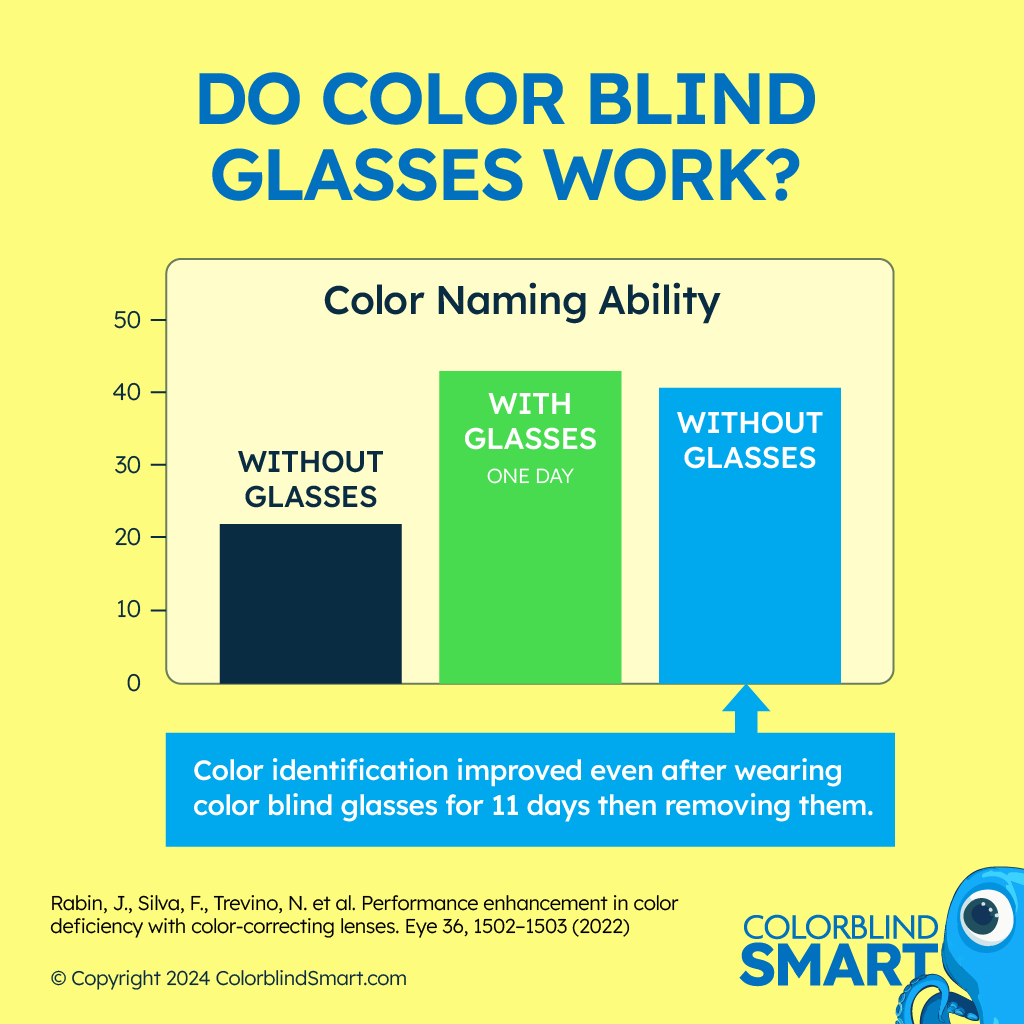
Interestingly, one study found that the effects on brain activity lingered even after removing color-correcting glasses.1 That suggests these glasses may be one way to spark new pathways in color processing. They might serve as a “kickstart” for developing stronger visual strategies. But calling them a color blindness cure would definitely be an overstatement.
2. Gene Therapy Attempts
Gene therapy tries to go straight to the source: correcting the genetic mutation in your DNA. Scientists have studied this approach in animals, successfully introducing functioning genes to repair or replace defective photoreceptors. While the experiments are promising, there are significant hurdles to applying this to humans.
Using viruses to deliver changes to our DNA is inherently risky. Even if it works in theory, clinical trials take years—if not decades—to ensure safety and efficacy. For the time being, a gene therapy-based color blindness cure isn’t something you’ll find at your local hospital. Researchers are still working out the complexities, and it could be a long road before the FDA or other regulatory bodies approve such treatments and maybe even longer before the public accepts the risks.
3. Assistive Tools and Apps
Even if you’re not trying color-correcting glasses or advanced gene therapy, plenty of other gadgets can help. Smartphone apps exist that identify colors through your camera, labeling them in real time. This can be a lifesaver when picking clothes, reading color-coded maps, or sorting wires.
There are also digital filters and browser plugins that restructure on-screen colors into more contrast-friendly palettes. These tools are especially helpful if your work involves reading charts or graphics online. At Color Blind Smart, we’re developing our own colorblind app to streamline daily color challenges. Such tools won’t fix your genetics, but they make the world more manageable.
The Best-Kept Secret About a “Color Blindness Cure”

Back in 2020, the University of Nevada published ground-breaking research. It bolstered something that earlier studies had hinted at: your brain’s color perception can be trained.2 For years, psychologists and neuroscientists have noted that even people with normal color vision can enhance their color discrimination through repeated exercises. These findings extend to color blind individuals as well.
Does training fix your cone cells? Not exactly. Your cones still respond to the same, possibly incorrect wavelengths of light. But your brain is adaptable. Even when the signals aren’t normal, you can learn to interpret them more accurately. Over time, your visual cortex grows better at telling red from green—even if both cones are firing at overlapping wavelengths.
For me, this revelation was huge. I realized I could systematically build on the small cues I’d subconsciously picked up over time. With practice, I started to guess colors more accurately, confirm them in context, and store those lessons for future reference. Before long, color identification felt natural enough that people rarely noticed I had a deficiency.
How Does Color Vision Training Work?
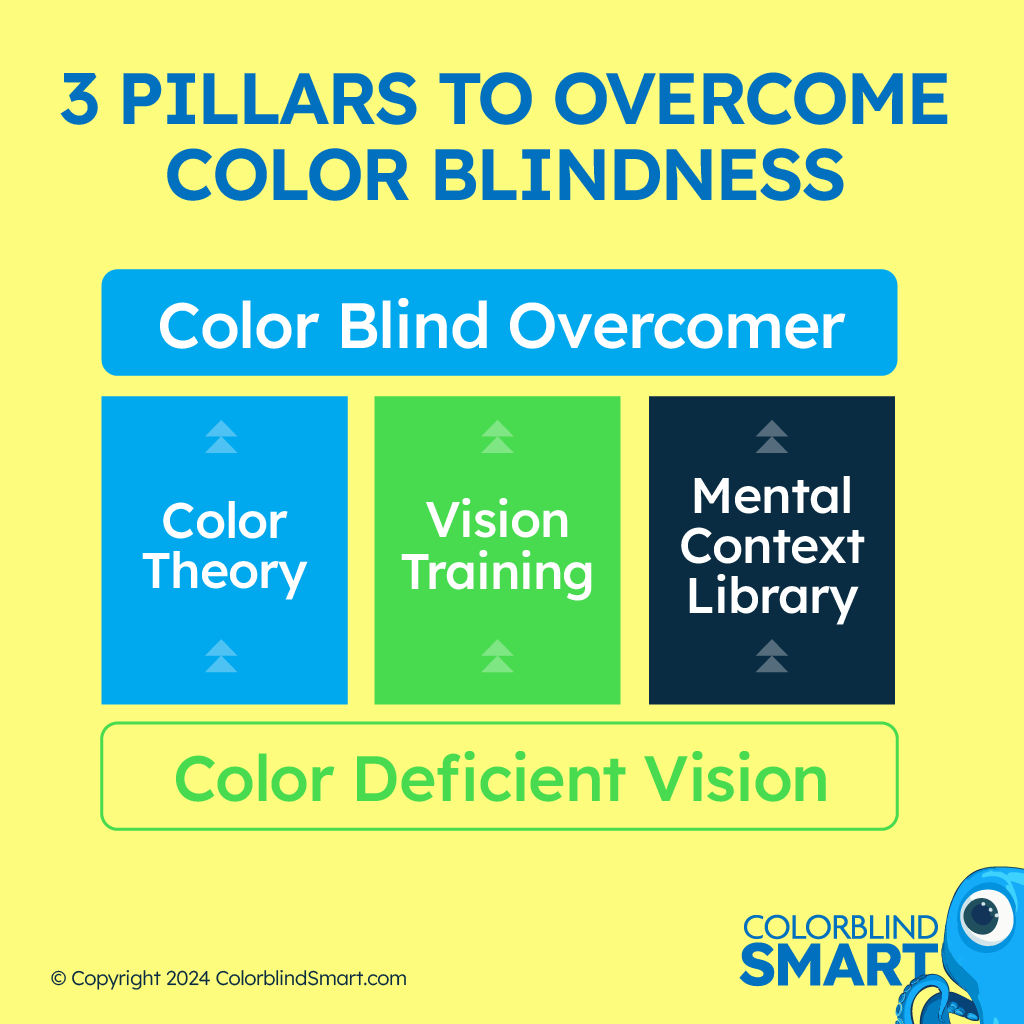
1. Context Clues and Understanding Color Theory
I began associating certain contexts or patterns with specific colors. For instance, I learned that certain objects are typically red (like stop signs or brake lights), while green objects often appear in nature (trees, grass, leaves). My color knowledge expanded when I studied color theory—learning how hues contrast or complement each other on a color wheel. This mental framework helps me mentally organize colors, even if my cones feed me flawed data.
2. Repetitive Exposure and Feedback
Practice is everything. I used apps and real-world scenarios, always getting immediate feedback on what color I was actually looking at. Over time, my brain compiled these associations into new neural maps.
3. Leveraging Partial Cone Overlap
Even if your green cones fire at a wavelength similar to red, they still fire differently enough for a trained brain to pick up subtle distinctions. My deuteranomalous cones still sense some green. Tuning my awareness to those small signals significantly improved my color discrimination. Think of it as teaching your brain to amplify the subtle differences.
If you’re interested in learning how to train your brain to improve color perception, sign up for my free email course. Here’s what you’ll learn:
- Three pillars to overcoming color blindness
- How your eyes work (and don’t)
- Critical understanding of color theory
- How to build your mental library
Sign up today! It’s totally free and you can unsubscribe at any time.
Is Training a Cure?
I hesitate to call anything a genuine “cure” for color blindness unless it fixes the cone cells or the DNA behind them. But mental training can yield remarkable results—so much so that many color blind individuals function almost indistinguishably from people with typical color vision. If you define “cure” as “no longer hampered in daily life,” then training seems like the closest thing we have right now.
That said, there are limits. Certain color-based tasks remain tricky, and no mental exercise will physically alter malfunctioning cones. But if the goal is to navigate the world effortlessly, a combination of brain training, context knowledge, and assistive tools can make color blindness a minimal inconvenience.
Final Thoughts on the Prospect of a Cure
To sum it up, a true medical color blindness cure doesn’t exist yet. Gene therapy is on the horizon but remains years away from practical application. Color-correcting glasses can help some people, but their impact varies. Meanwhile, smartphone apps and digital tools provide day-to-day assistance without claiming to rewire your eyes.
The most promising immediate strategy is retraining how your brain interprets visual data. This approach takes persistence, consistency, and a willingness to make mistakes, but it’s helped me—and others—see the world more accurately than we ever thought possible. It’s dramatically expanded my ability to live and work without feeling hindered by color confusion.
References
Footnotes
-
Rabin, J., Silva, F., Trevino, N. et al. Performance enhancement in color deficiency with color-correcting lenses. Eye 36, 1502–1503 (2022) https://doi.org/10.1038/s41433-021-01924-0 ↩
-
Isherwood ZJ, Joyce DS, Parthasarathy MK and Webster MA. Plasticity in perception: insights from color vision deficiencies. Faculty Reviews 2020 9:(8) https://doi.org/10.12703/b/9-8 MDX Syntax Documentation ↩
Last updated: April 04 2025